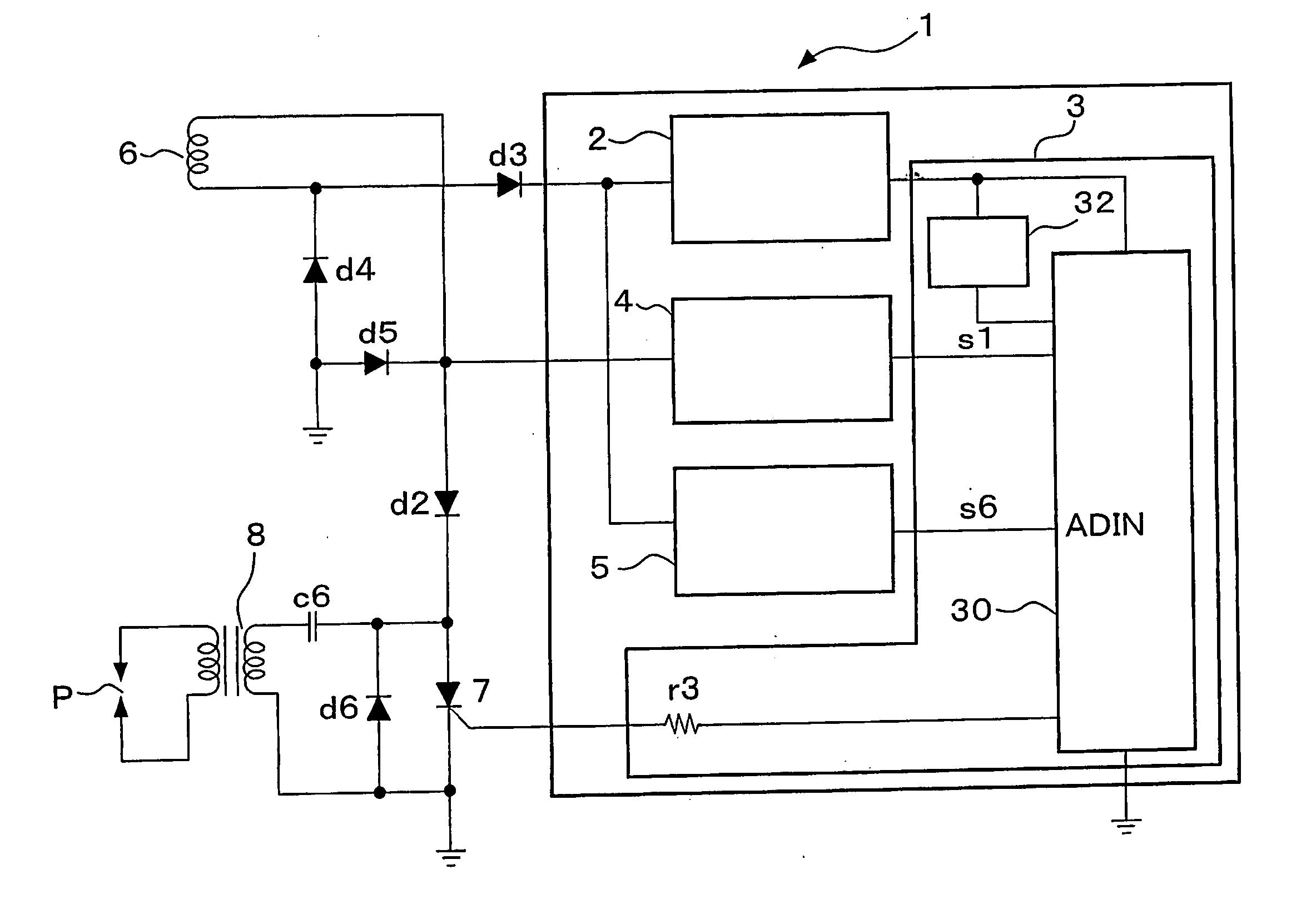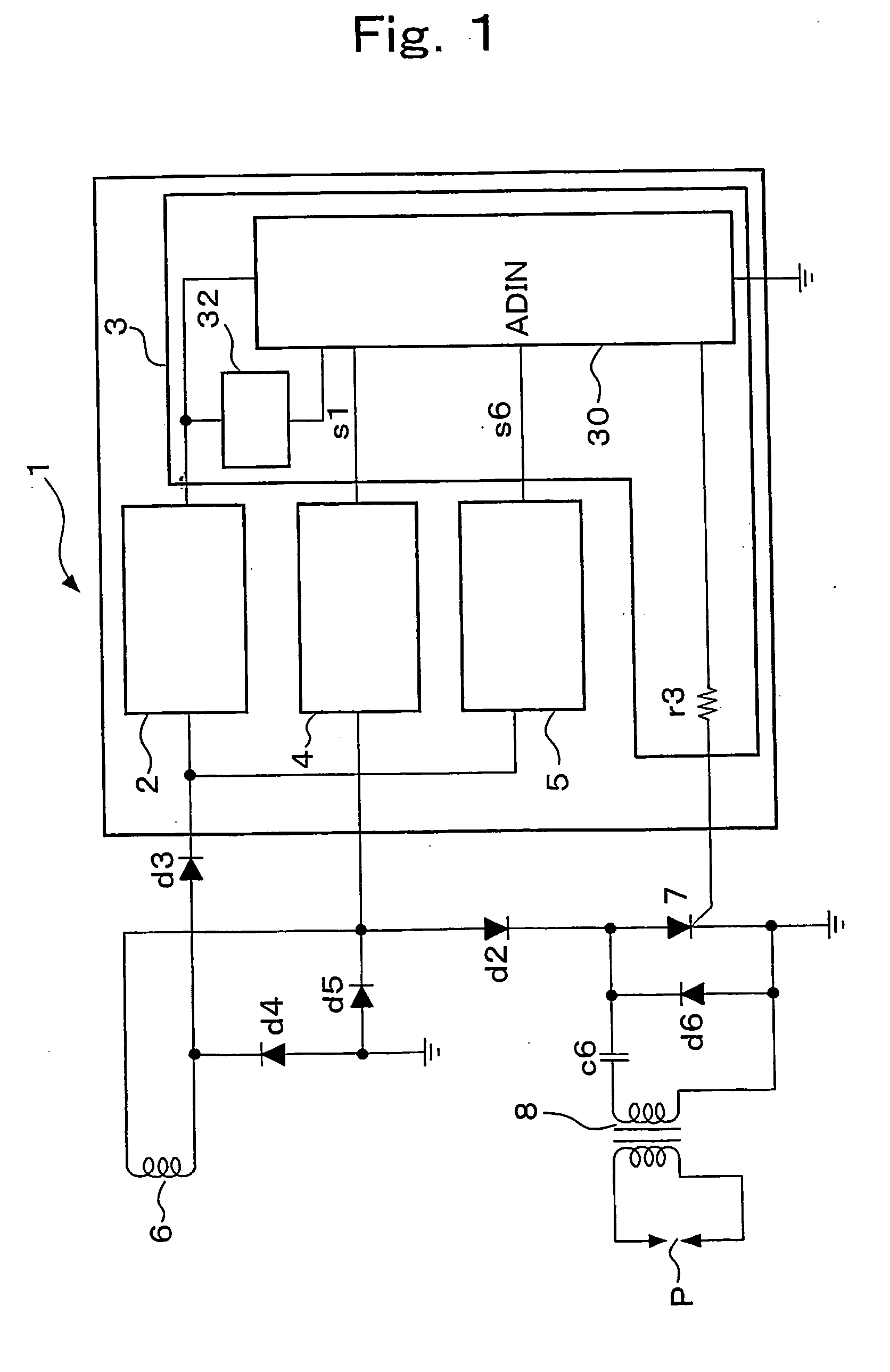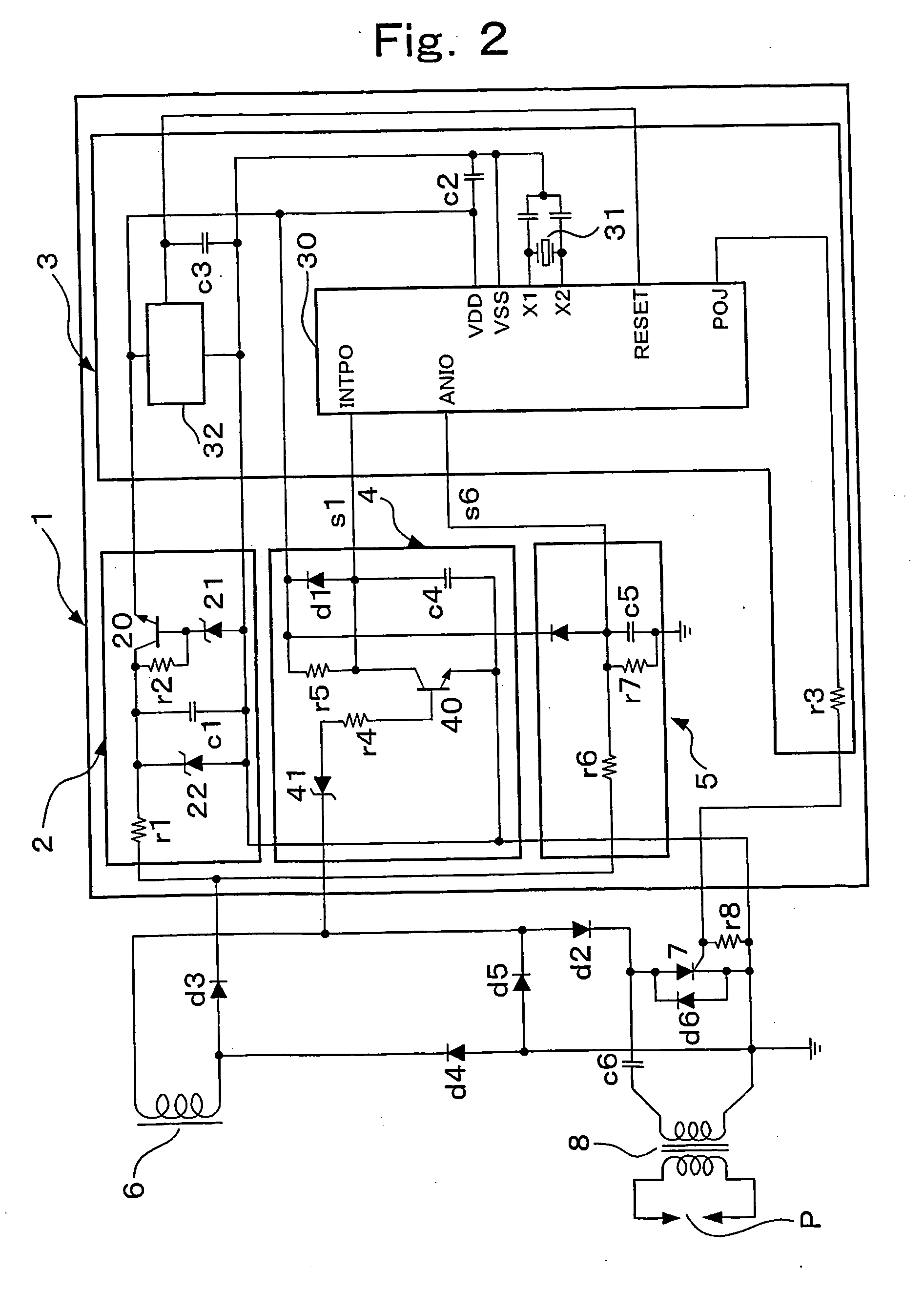This stop means employing only the manual stop switch has a
disadvantage in that although a stop switch formed of a push-button self-
recovery normally
open contact switch provides an easy stop operation, it requires continuously pressing the stop switch until the internal
combustion engine comes to a complete stop, thus complicating its handling.
On the other hand, such a
disadvantage is also provided where the internal combustion engine may be started without having switched the stop switch to an OFF state, thereby making it difficult to re-start the internal combustion engine.
H-7-26602 requires a pulser coil external to the generator coil, thereby raising a problem of the generator being made complicated in structure, and requiring
high dimensional accuracy during
assembly leading to complicated handling.
There was also another problem in that an ignition operation is performed even at the time of a
low speed operation of an engine which cannot provide a voltage available to the operation of the
microcomputer, causing the engine to operate very unstably at a
low speed and especially to operate unstably at the time of a start-up.
There was still another problem in that the low-speed ignition position signal supplied by the pulser coil is always generated at constant rotational angle intervals because the pulser coil is fixed immovably, thereby making it impossible to provide an advancing operation suitable for the speed of the engine in the low speed region and thus eliminate the
instability in low speed operation of the engine.
Thus, there was another problem in that occurrence of variations in rotation typical of the low speed region, causing the RPM of the engine to be reduced at the time when the
piston approaches the
top dead center, would result in a significant advance in ignition timing, thereby leading to the possibility of a kickback occurrence.
Thus, there was another problem in that it proves difficult to smoothly reduce the RPM of the internal combustion engine.
However, this eliminates the need for the ignition
recovery control in the over-rotation
prevention control mode, providing no meaning to the aforementioned prior art.
In this case, there is a problem in that the difference between the RPM in the misfire state and the RPM at the time of the ignition state being restored is likely to become bigger, thereby causing a load to be operated under significant variations in speed and lack of smoothness.
However, the
ignition control circuit serving as a main portion of the ignition device requires proper setting of a circuit constant such as impedance, complicated handling such as setting of ratings of each of the parts constituting the stop means, and complicated connections to the
ignition control circuit.
This raised a problem of requiring time and effort for handling and implementation.
There was also a problem in that occurrence of a failure such as a short-circuited or open rechargeable / dischargeable
capacitor or switching element leads to a loss of a stop function thus providing no fail-safe function.
Thus, this raised a problem in that forming the stop means requires a number of parts, thereby making its structure complicated as well as raising its costs.
H-7-26602, the rising edge of a recharge voltage, at the time of start-up of the internal combustion engine, in a
constant voltage power supply portion for recharging the reverse voltage portion of the generator coil is delayed due to the
current limiting resistor provided for security of the input portion, thereby making it impossible to
start up the microcomputer quickly.
Thus, there was another problem in that since a
recoil starter had to be used to rotate the internal combustion engine at least three to four times to provide ignition, its start-up characteristics were not always good.
However, the ignition operation having been stopped in this misfire state causes the RPM of the internal combustion engine to reliably start reducing, thus reliably preventing the RPM from increasing up to a dangerous region.
Furthermore, the difference between the ignition
recovery speed and the operation upper limit speed is set to such a value that does not allow the RPM to reach the operation upper limit speed immediately after the RPM is at the ignition recovery speed causing the ignition operation to be restored.
For this reason, no ignition operation is performed until the internal combustion engine stops, thus causing the internal combustion engine to come to a complete stop.
Furthermore, in the ignition device for an internal combustion engine, a misfire resulting from an abnormal surge never occurs twice consecutively.
This is because of problems in that a drop in voltage (output voltage) occurring in the generator coil of the ignition circuit causes a decrease in energy released to the
secondary side of the
ignition coil, and a
distortion in the output voltage waveform of the generator coil causes an error to occur in the ignition timing.
 Login to View More
Login to View More  Login to View More
Login to View More 


